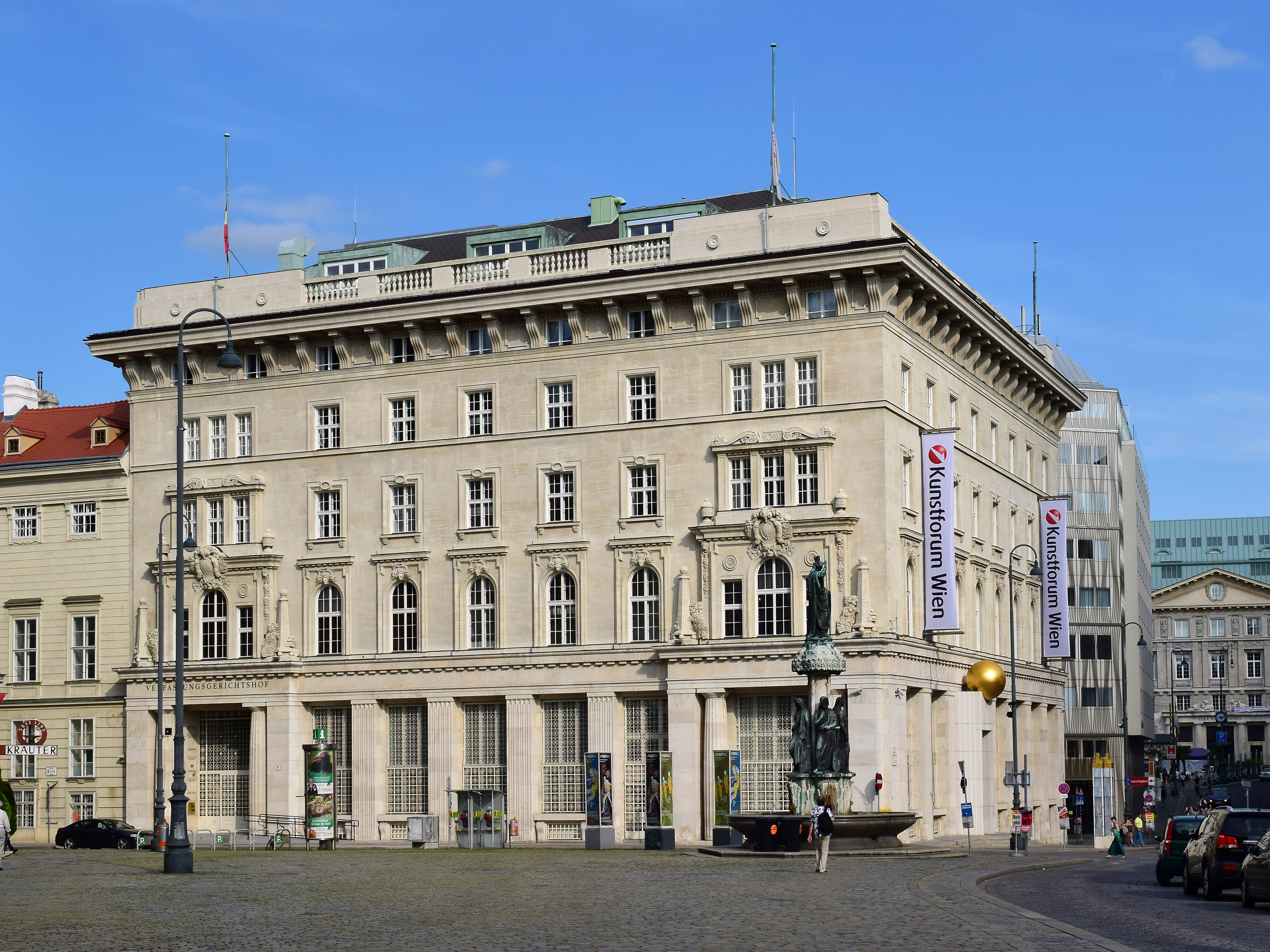|
Austrian Constitutional Court
The Constitutional Court ( or ) in Austria is the tribunal responsible for judicial review. It verifies the constitutionality of statutes, the legality of ordinances and other secondary legislation, and the constitutionality of decisions of certain other courts. The Court also decides over demarcation conflicts between courts, between courts and the public administration, and between federal and state bodies. It hears election complaints, holds elected officials and political appointees accountable for their conduct in office, and adjudicates on liability claims against Austria and its bureaucracy. The Court consists of fourteen members and six substitute members, appointed by the president on nomination of the Cabinet, the National Council, and the Federal Council. Although theoretically supposed to, the Court rarely meets in plenum and rarely hears oral arguments; most cases today are decided behind closed doors by panels of either nine or five members. Opinions tend to ... [...More Info...] [...Related Items...] OR: [Wikipedia] [Google] [Baidu] [Amazon] |
Innere Stadt
The Innere Stadt (; ; "Inner City") is the 1st municipal Districts of Vienna, district of Vienna () located in the center of the Austrian capital. The Innere Stadt is the old town of Vienna. Until the city boundaries were expanded in 1850, the Innere Stadt was congruent with the city of Vienna. Traditionally it was divided into four quarters, which were designated after important town gates: ''Stubenviertel'' (northeast), ''Kärntner Viertel'' (southeast), ''Widmerviertel'' (southwest), ''Schottenviertel'' (northwest). The Ringstraße circles the Innere Stadt along the route of the former Defensive wall, city walls. The first district is, with a workforce of 100,745, the largest employment locale in Vienna. This is partially due to tourism, as well as the presence of many corporate headquarters due to the district's central location. Geography Innere Stadt is the central district of Vienna. It borders Leopoldstadt in the northeast, Landstraße in the east, Wieden and Mariahil ... [...More Info...] [...Related Items...] OR: [Wikipedia] [Google] [Baidu] [Amazon] |
Judicial Restraint
Judicial restraint is a judicial interpretation that recommends favoring the ''status quo'' in judicial activities and is the opposite of judicial activism. Aspects of judicial restraint include the principle of '' stare decisis'' (that new decisions should be consistent with previous decisions); a conservative approach to standing (''locus standi'') and a reluctance to grant ''certiorari;'' and a tendency to deliver narrowly tailored verdicts, avoiding “unnecessary resolution of broad questions.” Judicial restraint may lead a court to avoid hearing a case in the first place. The court may justify its decision by questioning whether the plaintiff has standing; or by refusing to grant ''certiorari;'' or by determining that the central issue of the case is a political question better decided by the executive or legislative branches of government; or by determining that the court has no jurisdiction in the matter. Judicial restraint may lead a court to decide in favor of t ... [...More Info...] [...Related Items...] OR: [Wikipedia] [Google] [Baidu] [Amazon] |
Reutte
Reutte (; Swabian: ) is a town in the Austrian state of Tyrol. It is the administrative center of the Reutte district (''Districts of Austria''). Reutte is located on the Lech, and has a population of 6,704 (as of 2018). Neighbouring municipalities Adjacent municipalities and villages are: Breitenwang, Ehenbichl, Lechaschau and Pflach. History Reutte is located on the Via Claudia Augusta, a Roman road leading from Italy to Germany. The Tyrolean Salt Road from Hall in Tirol to Lake Constance crossed the entire district of Außerfern. Reutte (then Reuti) was declared a market town by Sigmund on June 5 1489. This was confirmed later by Maximilian I who also added some further rights. The people of Reutte commemorate this with an annual festival on the first Saturday in August. From 1692 the painter Paul Zeiller had a workshop in Reutte that later became an art school. His son, Johann Jakob Zeiller and adopted son, Franz Anton Zeiller, both received their first les ... [...More Info...] [...Related Items...] OR: [Wikipedia] [Google] [Baidu] [Amazon] |
